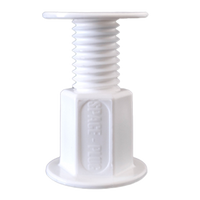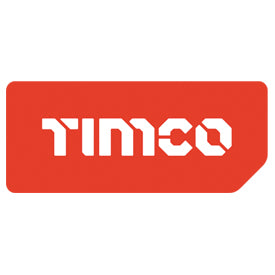Furniture Fixings: The Complete Guide.
When you build, fit, or design furniture, you soon realise it’s not the panels or boards that make it solid – it’s the fixings. Those little bits of metal and plastic are what hold everything together, keep it square, and stop it wobbling when you give it a nudge. Over the years I’ve used every type under the sun, from the humble screw to clever adjustable fixings, and I’ve learned that choosing the right one can make or break the job.
This guide runs through the main furniture fixings you’ll come across – the good, the bad, and the surprisingly smart. Whether you’re a tradesperson on site or a manufacturer designing furniture for production, it’ll give you a clear picture of what’s out there, what works best where, and how newer systems are changing the game completely.
So, kettle on, and let’s take a look at what actually keeps furniture standing.
What Are Furniture Fixings?
Put simply, furniture fixings are the connectors that turn flat panels and cut pieces into something that actually looks and feels like furniture. They join, align, and strengthen, and sometimes even allow a bit of adjustment when you need it most.
You’ve got your basics like screws and dowels that do the everyday joining. Then there are cams and bolts that make flat-pack assembly possible. You’ll find corner brackets and plates to add support, shelf pins for adjustability, and clever bits like hinge plates and spacers that keep everything neat and accurate.
In recent years, furniture design has changed. Installers want to work faster, manufacturers want precision, and everyone wants a cleaner finish. That’s pushed fixings to evolve. Modern systems – like Space-Plug Adjustable Spacer Fixings – take away the frustration, letting you fit straight through the cabinet and wind the fixing out to bridge the void perfectly. Less measuring, less swearing, more progress.
Next, I’ll run through the most common types of fixings, I will keep adding to this list over time and let you know what they’re used for, and a few things I’ve learned the hard way about each of them.
Furniture Fixings at a Glance
Furniture fixings come in hundreds of forms - from simple wood screws to precision cam fittings and modern adjustable spacers. Below you’ll find the main common ones used across furniture manufacturing and installation today. Click any fixing to jump to its section and learn more.

Wood Screws

Self-Tapping Screws

Machine Screws

Confirmat Screws

Furniture Screws

Stainless Steel Screws

Electrical Screws

Connector Bolts

Cross Dowel Barrel Nuts

Connector Nuts

Cam Lock Nuts

T-Nuts

Cam Fittings

Cam Dowels

Knock-Down Fittings

Modesty Blocks

Angle & Corner Brackets

Mirror Fixings

Shelf Supports & Pins

Packers & Shims

Insert Nuts

Space-Plug Adjustable Fixings

Datum Pegs
Wood Screws
The most common fixing in furniture making, wood screws secure timber components together. They come in various head types - usually countersunk or pan head - and bite directly into the grain for a tight hold. Ideal for flat-pack assembly and carcass frames.
For more information on countersunk screws - read our 'Ultimate Guide to Choosing & Using Flat-Head Screws'.
Self-Tapping Screws
Used mainly in sheet materials or metals, self-tapping screws create their own thread as they’re driven in. A handy option for quick repairs or attaching fittings without pre-drilling holes. Available with sharp or blunt points depending on the surface.
Machine Screws
Machine screws are designed to fit into a pre-threaded hole or nut. Common in knock-down furniture systems and metal fixings where repeat tightening might be needed. They deliver a strong, reusable connection.
Confirmat Screws
These chunky screws are popular for connecting particleboard and MDF panels. Their large threads give strong grip in soft materials, making them a favourite for carcass assembly in kitchen and wardrobe units.
Furniture Screws
A broad category covering decorative or hidden screws made for furniture construction. These include cap-head and cover-cap options designed for a neater finish inside cabinets and frames.
Stainless Steel Screws
Used where moisture or corrosion might be an issue — such as in bathrooms or outdoor furniture. Stainless screws keep their strength and appearance even in damp environments.
Electrical Screws
These are short, fine-thread screws typically used for securing switch plates, fittings, or electrical back boxes within furniture designs that include lighting or charging points.
Connector Bolts
Connector bolts pair with threaded inserts or cross dowels to create strong, demountable joints. Often found in bed frames, wardrobes, and heavy furniture where strength and reassembly are key.
Cross Dowel Barrel Nuts
Barrel-shaped nuts used with connector bolts to form tight, 90° joints. They’re common in flat-pack furniture and allow for firm tightening without splitting panels.
Connector Nuts
Similar to barrel nuts but in a simpler cylindrical form, connector nuts are used with bolts through pre-drilled holes to lock panels securely together. Great for adjustable or reconfigurable furniture.
Cam Lock Nuts
A hallmark of modern flat-pack furniture, cam locks tighten onto a mating bolt to pull two panels snugly together. Once locked, the joint is hidden for a clean, seamless look.
T-Nuts
These insert nuts feature prongs that bite into wood or chipboard, creating a flush metal thread inside the material. Ideal for repeat assembly or when using machine bolts in wooden structures.
Cam Fittings
Cam fittings (used with dowels) are the classic “turn and lock” systems found in flat-pack cabinets. Quick to fit and remove, they’re ideal for mass-produced furniture that still needs solid joints.
Cam Dowels
These dowels slot into one panel and lock into the cam fitting on the other. Together they form a reliable, tool-free fixing used across kitchen units and wardrobes worldwide.
Knock-Down Fittings
Designed for furniture that needs to be taken apart and reassembled easily. Knock-down fittings include cam locks, connector bolts, and similar joinery designed for strength and convenience.
If you’d like a deeper look at how cams and dowels actually work in modern flat-pack construction, you can read our full guide to cam and dowel furniture fittings.
Modesty Blocks
Simple plastic or metal corner fixings that secure panels at 90°. Common in budget furniture or shelving — a no-frills, dependable way to join lightweight components.
Angle & Corner Brackets
Angle and corner brackets provide mechanical strength where two parts meet. They’re useful in furniture reinforcement or wall-mounted applications.
Mirror Fixings
Used for securing glass or mirrored panels. These often include chrome or plastic covers for a tidy, finished look in dressing tables or wardrobes.
Shelf Supports
Small but essential, these pegs or cups hold shelves in position inside cabinets. Adjustable types allow fine-tuning the height without tools, perfect for flexible storage systems.
Packers & Shims
Used to level and adjust components during fitting. Packers and shims are the secret heroes of precise installation, helping compensate for uneven walls, floors, or gaps.
Insert Nuts
Threaded inserts pressed or screwed into timber, allowing bolts or machine screws to be used repeatedly without wear. They give wood the strength of metal where it counts.
Space-Plug Adjustable Spacer Fixings
Invented by kitchen installer Cliff Petit, Space-Plug adjustable spacer fixings replace fiddly L-brackets for fixing base units to the wall. They bridge the service void, adjust perfectly to fit, and make alignment fast, neat and professional. Used by installers across the UK for kitchens, bedrooms and bathrooms.
Datum Pegs
Datum Pegs create precise service voids behind fitted furniture - ideal for manufacturers standardising cabinet design. Available in fixed sizes from 30mm to 70mm, they make cable routing and alignment simple, while saving material and install time.
Learn more about what a kitchen unit service void is and how Datum Pegs recreate them.
Frequently Asked Questions About Furniture Fixings
What are furniture fixings?
Furniture fixings are the small components that hold furniture together or keep it secure. They include screws, bolts, cam-and-dowel connectors, brackets, shelf supports, and modern adjustable spacers. Without them, furniture wouldn’t stay aligned, stable, or safe.
What’s the difference between a fixing and a fastener?
Fasteners join parts together (e.g., screws, bolts, cam & dowel connectors). Fixings secure the furniture in its final position or add stability (e.g., wall brackets, angle plates, adjustable spacers like Space-Plug). In short: fasteners build the unit; fixings hold it in place.
Which are the strongest options?
For assembly (fasteners): cam & dowel systems and confirmat screws make very strong panel-to-panel joints in chipboard/MDF. Connector bolts with cross dowels are ideal for heavy, demountable joints (beds, wardrobes).
For securing/anchoring (fixings): heavy-duty wall brackets or angle plates fixed into studs/masonry offer the highest static load. Adjustable spacer fixings (e.g., Space-Plug) give a rock-solid, aligned cabinet-to-wall connection while saving install time.
Are plastic furniture fixings reliable?
Yes - modern engineered polymers are exceptionally tough and stable. When designed and tested properly, plastic fixings (like Space-Plug) deliver consistent load performance and precision, and are used by professional installers across kitchens, bedrooms, and bathrooms.
Can furniture fixings be reused?
Some can, some shouldn’t. Screws/bolts are often reusable if undamaged. Cam locks and certain dowels are best replaced once removed. Adjustable spacer fixings like Space-Plug are fully reusable and can be readjusted during refits.
What’s the easiest option for beginners?
For flat-pack assembly, cam-and-dowel connectors are the most beginner-friendly. For securing base cabinets to walls, adjustable spacer fixings avoid fiddly bracket placement: drill, set, adjust, tighten - quick and accurate.
How do I choose the right fixing for my project?
- Load: Is it decorative or structural? Heavier loads need stronger systems.
- Material: Chipboard, MDF, and solid timber behave differently - match the fixing to the substrate.
- Access: Will you need to adjust or remove it later? Choose demountable/adjustable systems where helpful.
As a rule: use cam/dowel or confirmats for panel joints; brackets or adjustable spacers for wall fixing; shelf pins for light internal shelves.
Do professionals use these same fixings?
Absolutely. Fitters, joiners, and cabinetmakers use the same families of fasteners and fixings every day - often favouring faster, cleaner systems like adjustable spacers to save time without sacrificing strength or accuracy.
How to Choose the Right Furniture Fixing
Every fixing has a job to do. The trick is knowing which one gives you strength, precision, and ease of assembly. While a wood screw might be perfect for simple joints, a cam and dowel system could make your flat-pack come together in half the time. And when it comes to fixing kitchen or wardrobe cabinets to the wall, the choice of fixing becomes even more important.
Choosing the right furniture fixing starts with understanding three key things:
- The load: Is it decorative or structural? Heavy items need fixings designed to carry weight safely.
- The material: Chipboard, MDF, and solid wood all behave differently — so pick a fixing made for the job.
- The access: Some fixings are buried or hidden once fitted, so consider whether they’ll ever need tightening or removal later.
Modern furniture design relies on fixings that are strong, fast, and adjustable. That’s exactly where innovations like Space-Plug Adjustable Fixings and Datum Pegs come into play. They make it possible to fit units flush, bridge service voids, and achieve a professional finish with ease.
Modern Furniture Fixings: Smarter, Faster, Stronger
The old angle bracket has served its time. It’s still useful for rough work, but new furniture systems demand smarter ways to connect, align, and support. Adjustable spacer fixings, concealed connectors, and modular fittings are now setting the standard across the furniture industry.
That’s why products like Space-Plug are now found in professional kitchens, bedrooms, and bathroom installations across the UK. They don’t just save time - they make fitting safer, cleaner, and easier for everyone involved.
Invented by a professional installer, Space-Plug products are designed to fix furniture smarter - not harder.















